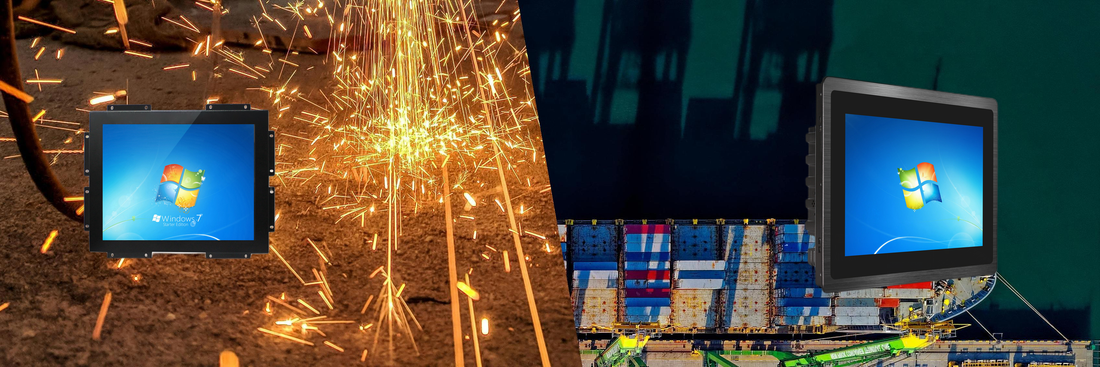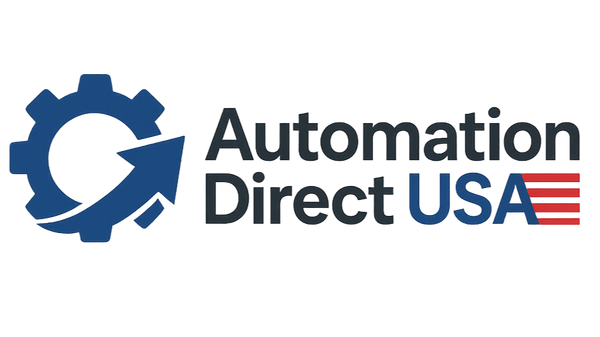
Advanced Industrial PCs Powering Machine Vision and Automated Inspection
Advanced Industrial PCs Powering Machine Vision and Automated Inspection
The advent of machine vision technology has revolutionized industrial automation and inspection processes, making them more efficient and precise than ever before. Powered by robust industrial PCs (IPCs), these systems combine advanced computational power with cutting-edge sensors, cameras, and software to deliver unmatched speed and accuracy in various environments, from factory floors to remote industrial sites. Machine vision is increasingly recognized as a precursor to more complex machine learning systems, leveraging advanced technologies to automate tasks once reliant on human inspectors.
The Importance of Industrial PCs in Machine Vision Applications
Industrial PCs are the backbone of modern machine vision systems. These specialized computers offer several advantages over standard consumer-grade PCs, especially in the demanding environments where machine vision systems operate. Here’s why industrial PCs are essential for these applications:
-
High-Speed Data Transfer with Modern USB Interfaces and GPIO
Modern industrial PCs are equipped with the latest USB 3.0 interfaces, which offer high-speed data transfer rates essential for real-time image processing. With speeds up to 5Gbps, USB 3.0 allows these systems to handle the massive influx of data from high-resolution cameras without lag or data loss. This ensures smooth integration with IoT sensors, which are critical in capturing visual data for further analysis. -
Support for Advanced Multi-Core Processing
Machine vision systems require immense computational power for real-time inference analysis. Multi-core processors, supported by modern industrial PCs, allow for faster and more efficient data processing. Whether processing large datasets or making split-second decisions, industrial PCs provide the necessary hardware backbone to handle these complex tasks. -
Resilience to Harsh Environmental Conditions
Factory environments can be unforgiving, with wide temperature fluctuations, electrical surges, and dust or moisture exposure. Industrial PCs are designed to withstand these harsh conditions, featuring wide-temperature operation ranges, rugged casings, and protection against voltage spikes. This makes them ideal for 24/7 operation in environments where downtime is costly. -
Large Memory and Storage Capacity
Many machine vision applications require the processing and storage of large amounts of visual data. Industrial PCs support up to 64GB of DDR4 RAM, enabling efficient multi-tasking and caching for real-time data analysis. Coupled with substantial solid-state drive (SSD) storage options, these systems can store massive datasets, ensuring that critical information is retained without reliance on cloud solutions. -
Modular Expansion with PCIe Slots for GPU Accelerators
High-performance GPUs are integral to machine vision systems, particularly those involved in real-time computing and inference analysis. Industrial PCs allow for modular expansion through PCIe slots, enabling the addition of high-powered GPU accelerators. These GPUs handle intensive parallel processing tasks, ensuring that data from multiple cameras and sensors is processed instantaneously.
Machine Vision: From Automation to Intelligent Machines
Machine vision technology is akin to the “eyes” of an automated system. These systems use one or more cameras to capture visual data, which is then analyzed and interpreted by sophisticated software. The resulting information is used to make decisions or trigger specific actions, from identifying defects in a manufacturing process to guiding robotic arms in pick-and-place operations.
At its core, machine vision comprises a few essential components:
- Cameras: Capture high-resolution images of objects.
- Sensors: Gather data related to the objects being observed.
- Computing Systems: Analyze the data and images using specialized algorithms to identify patterns and make decisions.
Machine vision operates at a speed beyond human capability, and its precision makes it an indispensable tool in modern industrial automation. Furthermore, advances in artificial intelligence (AI) and machine learning (ML) are helping machine vision systems evolve beyond simple tasks. These technologies are increasingly capable of learning from the data they gather, improving their accuracy and efficiency over time.
Key Features of Machine Vision Systems in Industrial PCs
-
USB 3.0 I/O for High-Speed Sensors
With the proliferation of high-resolution IoT sensors, the USB 3.0 interface has become the standard in image processing. This allows for seamless plug-and-play integration with cameras, reducing latency and ensuring fast data transfer rates that can reach up to 5Gbps. -
GPIO for Precision Timing
Many high-precision applications require simultaneous camera triggers. This is where the General Purpose Input/Output (GPIO) interface comes in, allowing the system to sync multiple cameras to capture images at precise moments. Industrial PCs can control these triggers through programmable software, ensuring synchronized image acquisition even in fast-moving environments. -
x16 PCIe Slots for Real-Time Inference
In machine vision applications that require real-time decision-making, industrial PCs equipped with high-powered GPUs are indispensable. These systems process vast amounts of data in parallel, enabling faster decision-making and improving the efficiency of automated systems. The ability to add GPU accelerators, through x16 PCIe slots, allows for scalability as computational demands increase. -
Solid-State Storage for Data Redundancy
Data storage is a critical concern for industrial applications. Machine vision systems often generate large amounts of data, and losing this data could mean costly production delays. Many industrial PCs offer configurations that include multiple high-capacity SATA SSDs. These systems can also support RAID configurations for data redundancy, ensuring data integrity even in the case of drive failure. -
Extended Temperature Tolerance
Industrial PCs are designed to operate in extreme conditions, including high-heat environments generated by powerful GPUs and other electronics. Advanced thermal management systems, such as fanless designs or specialized heat sinks, ensure these systems maintain optimal performance without overheating. -
High-Capacity RAM for Multitasking
Machine vision tasks often involve large datasets and require real-time processing capabilities. The more RAM a system has, the better it can handle multiple tasks simultaneously. Industrial PCs can support up to 64GB of DDR4 RAM, providing the headroom needed to process large amounts of visual data while maintaining system performance. -
Trusted Platform Module (TPM) for Security
Security is a growing concern for industrial IoT applications. Industrial PCs equipped with TPM 2.0 chips provide hardware-level security, ensuring that sensitive data is encrypted and secure from cyber threats. This is particularly important for systems operating in remote or sensitive environments where data integrity is crucial. -
GigE Cameras for Long-Range Imaging
For applications requiring longer-range connectivity, GigE (Gigabit Ethernet) cameras are becoming the standard. These cameras can be connected over distances of up to 100 meters, far surpassing the cable length limitations of USB 3.0. In addition, GigE cameras often support Power over Ethernet (PoE), reducing the need for separate power cables and simplifying installation.
Real-World Applications of Machine Vision
Machine vision systems are revolutionizing multiple industries by improving inspection processes, enabling faster production cycles, and reducing human error. For instance:
- Factory Automation: Industrial robots equipped with machine vision systems can perform precision tasks such as quality inspection and component assembly with minimal human intervention.
- Public Safety: Machine vision is increasingly being used for surveillance and security applications. These systems can recognize faces, detect suspicious behavior, and prevent potential threats before they escalate.
- Automotive Industry: Modern vehicles now come equipped with advanced driver-assistance systems (ADAS) that rely on machine vision to detect road conditions, monitor driver behavior, and reduce the risk of accidents.
- Healthcare: Medical imaging has greatly benefited from machine vision systems, enabling more precise diagnosis and treatment planning through advanced image processing technologies.
The Future of Machine Vision
As AI continues to advance, machine vision systems will become more intelligent and capable of handling more complex tasks. Over time, these systems will move from merely recognizing patterns and anomalies to making predictive analyses that can prevent problems before they occur.
In conclusion, machine vision technology powered by industrial PCs is transforming industries by enhancing the precision, speed, and efficiency of automated systems. As this technology continues to evolve, the possibilities for its application will expand, paving the way for more intelligent and autonomous systems.
To learn more about how advanced industrial PCs are enabling the future of machine vision and automation, contact us at IMDTouch or email support at support@IMDTouch.com. Our experts are ready to help you implement cutting-edge solutions tailored to your specific industrial needs.
